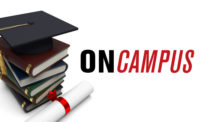"The answer, my friend, is blowing in the wind” is a popular lyric from one of Bob Dylan’s most famous songs. It’s also the central theme behind the Collegiate Wind Competition (CWC), an annual event sponsored by the U.S. Department of Energy (DOE).
The CWC pits teams of undergraduates from around the United States who develop real-world solutions to today’s renewable energy challenges. The two-part competition focuses on technical design and wind project development.
This year, 12 teams participated. Schools included Penn State, Texas Tech, Tuskegee University, the University of Maryland and the University of Wisconsin.
Competitors were asked to design a turbine to withstand continuous winds of 22 to 25 meters per second, and to research and develop a plan for a hypothetical 100-megawatt wind plant in eastern Colorado.
Because of the COVID-19 pandemic, the 2020 CWC took place virtually. As they prepared for the competition, students swapped their poster presentations for digital slides, practiced their pitches from home and used digital communication tools to stay connected to their teammates. During the online event, competitors logged in to present their designs and proposals to a remote panel of judges.
“The unique challenges of the 2020 competition added a new dimension to the CWC’s mission,” says Elise DeGeorge, competition manager at the National Renewable Energy Laboratory, which facilitates the CWC on DOE’s behalf. “In addition to the traditional CWC experience, the 2020 virtual format provided participants an opportunity to use digital tools to collaborate and communicate ideas with people who could be hundreds or thousands of miles away.”
After four days of online presentations, the award for the turbine digital design contest went to California State University Maritime Academy, while James Madison University (JMU) claimed the top honors for the project development contest.
“[Our] multidisciplinary team had to consider multiple aspects of the farm development, including location, wind resource, infrastructure, turbine technology and placement, land purchase, environmental impacts, project financing and construction,” says Keith Holland, interim associate vice provost for research and innovation at JMU.
“The prototype design competition required students to create a small-scale (45-centimeter diameter rotor) turbine to generate power in a specific set of wind tunnel testing conditions,” explains Holland. “Due to the pandemic, the competition organizers shifted to a primarily digital design format, emphasizing analysis over performance testing.”
The JMU team, comprised primarily of engineering students, ranked fifth in this portion of the competition. Unfortunately, the team was unable to finalize the construction of their prototype turbine due to a campus shutdown and the sudden shift to online learning.
The 2020 JMU team consisted of 21 students representing eight majors—computer science, engineering, geographic science, industrial design, integrated science and technology, management, physics and theatre—the most diverse of any of the CWC teams.
“The importance and significance of this is emphasized regularly by the competition organizers and DOE leadership, as it reflects the varied workforce that is required to sustain and grow the renewable energy industry,” says Jonathan Miles, professor of integrated science and technology and one of three advisors to the team. Miles also serves as director of JMU’s Center for the Advancement of Sustainable Energy.
“When developing wind turbines, CWC team members go from hub and blade all the way to drivetrain,” explains Miles. “They also have to conduct analysis on loading to make sure that the various components can survive potential failure or runaway conditions.
“They do the same type of analysis for the tower that supports the turbine, in addition to developing various types of electrical power scenarios, including electronics, controls and braking mechanisms,” adds Holland.
“I always tell students that the most interesting piece of this is not the individual components themselves, but how they all work together,” says Holland. “For instance, how small differences in the drivetrain can impact wind capture and the performance of the blades.”
Many components are either built in-house from scratch or sourced from suppliers such as Digi-Key and McMaster-Carr. Students do all machining, fabricating and assembly themselves. They also use additive manufacturing to print blades and other parts that contain complex geometries.
“In the 2021 CWC competition, one task that students will tackle is coming up with a distributed manufacturing plan that explains how they are sourcing parts,” says Holland. “We are also encouraging the team to consider using new types of materials and address various types of reuse and recycle challenges.”



